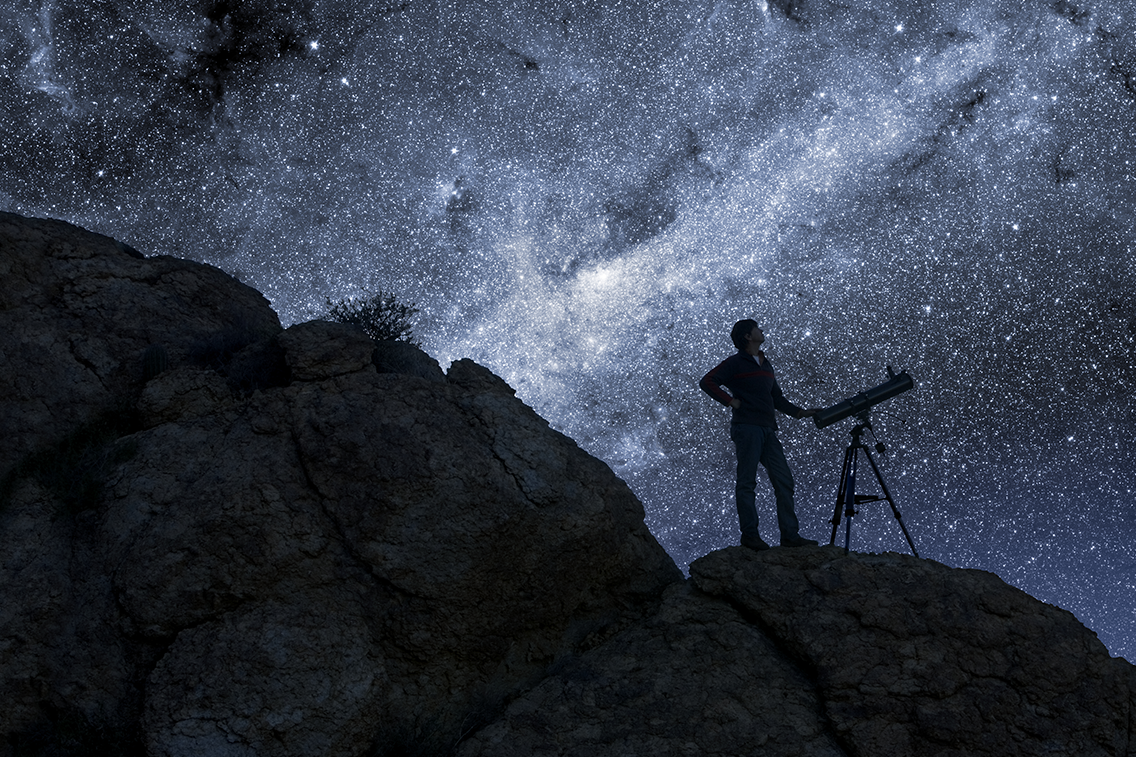
Today is Black Friday, a modern event that evolved from the furious rush to buy holiday gifts for loved ones on the day after Thanksgiving. Stores have sales, people get up early to avoid the rush (and ironically create one) and, most sadly of all, people who are unprepared to buy astronomical equipment purchase something that usually winds up unused and collecting dust. To avoid that situation, let’s talk astronomical equipment.
I get a lot of queries this time of year from readers asking what kind of telescope they should buy. My answer to this is always the same: Imagine if a stranger walked up to you and asked what kind of car they should get. What would you say? Any good answer would depend on how far they wanted to drive, what they needed the vehicle for, how many passengers they’d have and—the big question—how much money they had to spend.
It’s the same with a telescope. There are many different kinds for many different uses, and the price can range from “eminently affordable” to “this will cost more than your house.”
My first bit of figurative and literal advice for the would-be stargazer is to look into binoculars. These can be much more rugged and affordable than a telescope, and they are easier to use—you can keep them near a door and just grab them on your way out. A good pair can give you a decent view of things such as the moon and Jupiter and its satellites. Assuming you have access to a dark observing site, binoculars are also a good option for viewing big, bright objects such as the Orion nebula and the Andromeda galaxy. And they have a million other uses besides astronomy; I use mine more often for bird-watching than comet hunting. Additionally, their ease of use can help you familiarize yourself with the sky, which is advantageous if you decide to make the jump to a telescope.
And if you do make that decision, the most important question to ask yourself is: What will you use the telescope for? If you just want to see the moon, the bright planets and the occasional astronomical event such as a bright comet, then you don’t need anything big and fancy. A small refractor—that is, a telescope with a light-gathering lens at the front of the tube, usually up to 10 centimeters wide—may suit you well. Such scopes won’t necessarily empty your bank account, can be set up relatively quickly and aren’t too hard to use. Just beware of cheap department store offerings: these tend to have terrible optics and a wobbly mount, which will lead more to frustration than fascination with the sky.
If you’re interested in more serious stargazing, such as looking for nebulae and galaxies, then you’ll want a reflector—a telescope that uses a mirror to gather up light from fainter objects. It’s easier to make a large mirror than a lens, so reflectors can be quite large. The most common reflectors for amateur astronomy have mirrors spanning 15 to 30 cm across, though ones that are much larger are available if your budget has an extra zero or two at the end of it.
Even then there are a myriad of subcategories. Newtonian reflectors are (typically) long tubes with a primary mirror at one end. Some are small enough to use on a tabletop and sport a 10-cm mirror and a wide field of view. These are fun for looking at the Pleiades star cluster and other celestial objects that loom comparatively large in Earth’s sky. They don’t magnify a lot, however, so it’s difficult to see Saturn’s rings or Jupiter’s stripes with such telescopes.
Schmidt-Cassegrain telescopes (SCTs) are similar to Newtonian ones but use a complex system of lenses and mirrors that allows the tube to be much shorter, even for larger mirrors. SCTs are generally used with a tripod or other sturdy mount. They’re the kind I personally use (I have a 20-cm one). SCTs usually come with a motor drive to allow the telescopes to track slow-moving targets, such as stars as they rise or set. Such features mean SCTs are more complicated and take more practice to set up and use.
A newer development for motor-driven telescopes is the ability to autonomously find and track astronomical objects with the aid of an onboard computer and database. Most of these “GoTo” telescopes have many thousands of objects stored. With such a telescope, all you need to do is set it up, let it get its bearings from a bright star and then give it a target. Tell the telescope to find the Orion nebula and sit back as the gears whir and the instrument slews to put that magnificent star-forming gas cloud right into your eyeball.
Some astronomers don’t like telescopes with autonomous tracking; they say it’s better to learn how to find objects on your own before letting a machine do it for you. But I think it’s fine either way: Autonomous tracking gives you the joy of seeing objects easily without having to struggle with the telescope to find some faint fuzzy. And if you want (and I suggest you should), you can occasionally turn off the GoTo capability to try pointing on your own. There’s an extra taste of fun and accomplishment when you finally get that galaxy centered in your eyepiece.
Again, prices are wildly variable. Generally speaking, however, the larger the telescope and the more sophisticated its machinery, the more expensive it will be. Caveat emptor.
All that said, the most useful advice I can give you doesn’t require buying a telescope at all: just go to a star party! Many universities—even small ones—have observatories, and astronomy clubs and societies are almost everywhere, even in rural areas. Seek out one near you, learn when it holds public events and attend one. There may be dozens of amateur astronomers there with a wide variety of telescopes, and in my long experience, such folks are wonderfully eager to help. You can see how big the equipment is, how much experience you may need to use it and, of course, what the view is through the eyepiece. You wouldn’t buy a car without test-driving a few, right? It’s the same principle here.
Mind you, all this advice is just the tip of the telescopic iceberg. The deeper you look, the more you’ll realize there is to know, including what kind of eyepieces you prefer and whether you want to try astrophotography (better wait a while to get familiar with your equipment first!). If nothing else, you’ll want to learn your way around the sky, familiarize yourself with the constellations and uncover the treasures they hold.
For anyone who wants to try their eyeballs at amateur astronomy, I’ve saved my biggest piece of advice for last. This is a simple but not obvious thought, yet it’s absolutely critical to your future enjoyment: the best telescope for you is the one you will use. If it’s too big, heavy or complicated, then you’ll find yourself making excuses not to use it. Don’t overindulge in your purchase. Make sure you get the telescope that’s right for you (or the person you’re buying it for) and take your time learning how to use it. Astronomy isn’t a plug-and-play undertaking; like any other pastime, it takes time and patience to build up your skill.
But once you do, oh, the things you’ll see, the joy you’ll experience! You’ll have given the greatest gift there is: the entire cosmos.
So happy holidays, happy shopping, and may your skies be clear and the stars sharp.
Several astronomers and astronomy sites have advice for first-time telescope buyers as well, including my friend and radio astronomer Nicole Gugliucci, the Planetary Society and Sky and Telescope, and they dive into the details a bit more.



